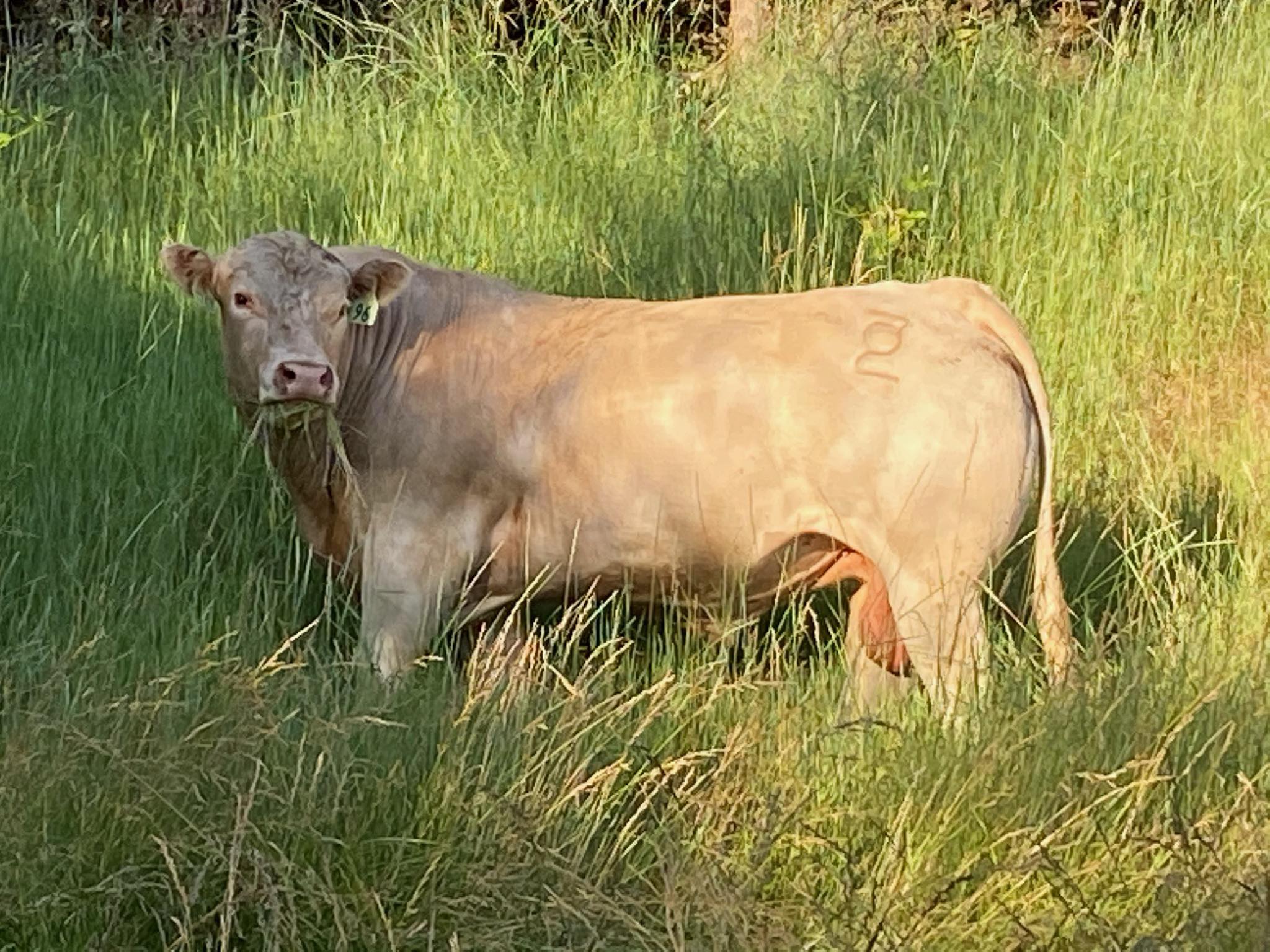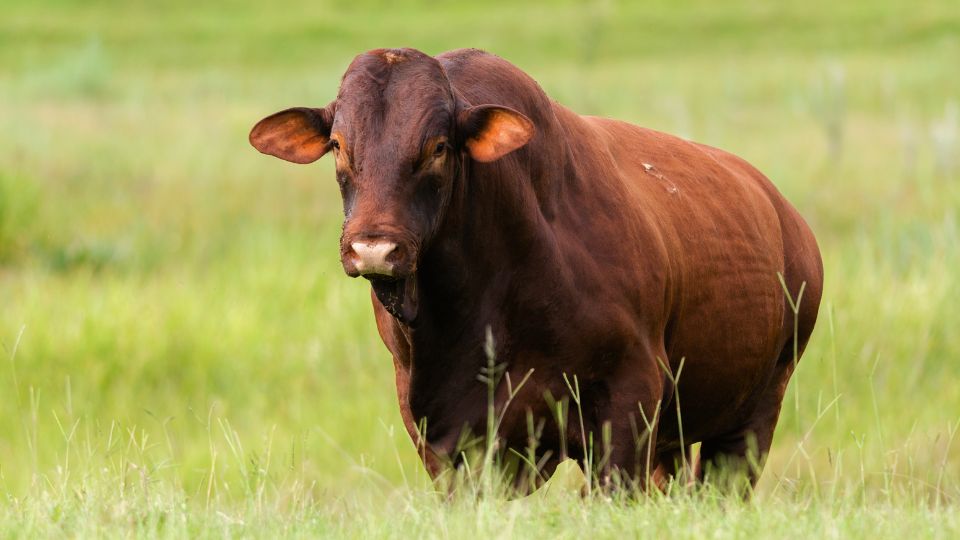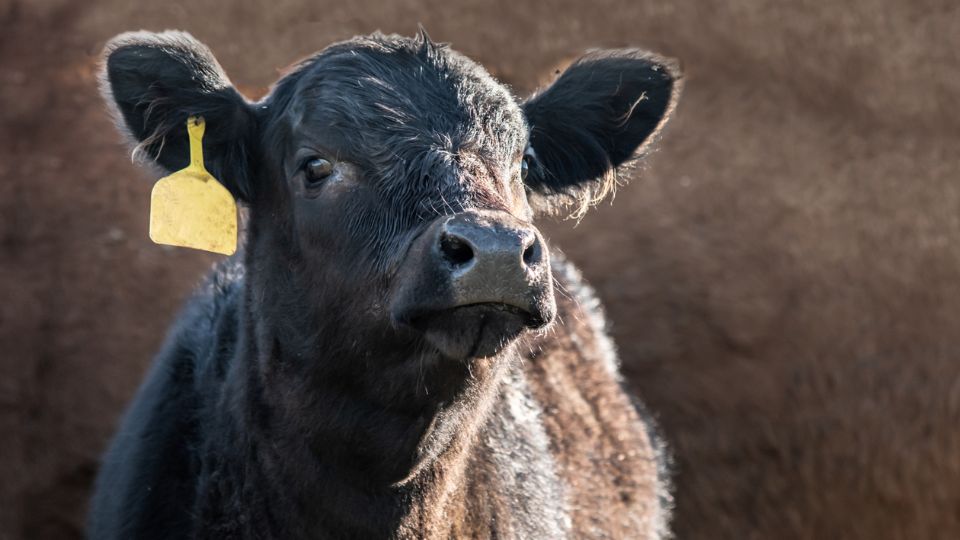The Benefits of Growth-Promoting Implants for Beef Cattle
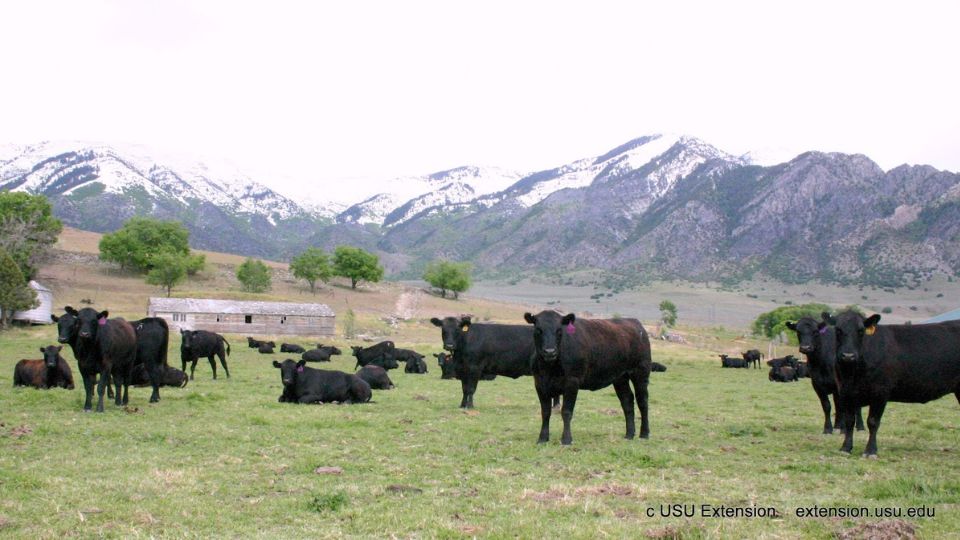
A valuable tool for beef producers, growth-promoting implants are regularly used to improve the beef industry’s environmental and economic sustainability by increasing the efficiency and growth rate of beef cattle (Duckett et al., 1997; Duckett & Andrae, 2001; Duckett & Pratt, 2014). Implants increase economically viable traits such as average daily gain (ADG) by 18%, feed intake and efficiency by 6%, and carcass weight and ribeye area (Duckett & Pratt, 2014), ultimately increasing economic return to producers. Depending on cattle prices and anabolic implant protocol used, economic returns for producers can be anywhere from $15 to $163 per head, depending on production practices and the type of implant used (Donovan et al., 1983; Duckett & Pratt, 2014).
Environmental sustainability also improves with use of growth-promoting implants because there is a positive correlation between improved production and environmental sustainability (Capper & Hayes, 2012). Current research shows that implanted cattle decrease:
- Land usage by 7.8% to 9.1% (Basarab et al., 2012; Capper & Hayes, 2012).
- Water usage by 5.5% (Webb et al., 2020).
- Greenhouse gas emissions by 5.1% to 8.9% within the beef industry (Basarab et al., 2012; Capper & Hayes, 2012).
Overall, growth-promoting implants help producers by increasing production and environmental sustainability.
History of Implants
In the U.S., over 40 commercially available growth-promoting implants are approved by the Food and Drug Administration (FDA). These implants are approved for all stages of cattle production, from suckling calves to finishing beef cattle, with different implants having different hormonal payout periods (Duckett & Andrae, 2001). As such, over 90% of cattle on feed receive implants during production, with 80% receiving two or more (Animal and Plant Health Inspection Service [APHIS, 2013]). These implants are administered as pellets in the middle-third section of the ear under the skin as a fail-safe, as the ear is rarely consumed.
Growth-promoting implants have routinely been used in the U.S. since the late 1950s (Smith & Johnson, 2020). The hormones currently used in beef cattle production have routinely been proven safe by the U.S. Food and Drug Administration (FDA) (Smith & Johnson, 2020); however, the FDA is currently reviewing re-implanting protocols (FDA, 2021).
Live Animal Performance

One of the benefits of using implants in production is the increase in live animal performance. Implants have been found to increase ADG by 18%, feed efficiency by 6%, and feed intake by 6%, on average (Duckett & Pratt, 2014). Table 1 highlights the improved performance observed in cattle that receive an implant. It is important to note that when producers use implants, performance can vary greatly from one operation to another (Jones et al., 2016). This variable response to implants can come from the animals being in different stages of production and their nutritional status, breed, and the different types of implants used (Jones et al., 2016).
Table 1
Benefits of Implanting Cattle
| Trait | Increase (↑) or Decrease (↓) | Advantage |
|---|---|---|
| Performance | ||
| Average daily gain | ↑ | 18% |
| Feed intake | ↑ | 6% |
| Feed efficiency | ↑ | 6% |
| Carcass weight | ↑ | 5% |
| Ribeye area | ↑ | 4% |
| Economic | ||
| Return | ↑ | $15 – $163* |
| Enviromental | ||
| Greenhouse gas emissions | ↓ | 5.1% – 8.9% |
| Water usage | ↓ | 5.5% |
| Land usage | ↓ | 7.8% – 9.1% |
*Varies depending on the year.
Adapted from Duckett & Pratt (2014) and Capper & Hayes (2012).
One major concern producers have when using growth-promoting implants is a possible decrease in carcass quality grade (Bruns, Pritchard, & Boggs, 2005), despite increases in hot carcass weight and ribeye area (Montgomery, Dew, & Brown, 2001). Quality grade is a component of the grid system, from which producers are primarily paid (Schroeder, Hogan, & Anderson, 2009), with the marbling score mainly determining quality grade (Schroeder, Hogan, & Anderson, 2009). It has been shown that a single growth-promoting implant reduces marbling compared to non-implanted cattle (Ducket et al., 1997; Smith et al., 2018).
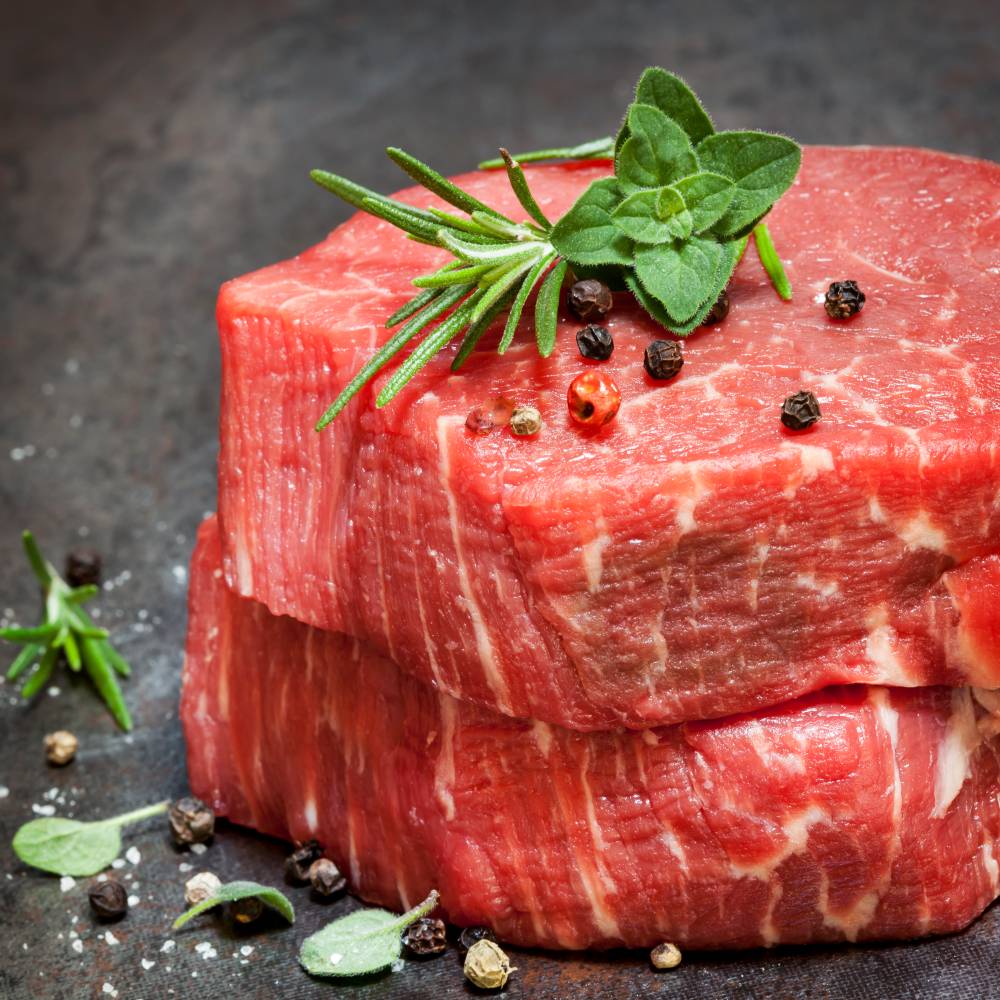
Marbling contributes to beef juiciness, flavor, and tenderness (McBee & Wiles, 1967), with tenderness often described as one of the more influential factors overall in consumer acceptance of cooked beef (Van Wezemael et al., 2014). Steaks from cattle that received an implant are consistently less tender compared to those from cattle that never received an implant (Platter et al., 2003). However, 60%–74% of all consumers were satisfied with steaks from cattle receiving various implant protocols (Platter et al., 2003). Taken together, growth-promoting implants do not appear to have a negative influence on fresh meat quality when managed correctly.
Conclusion
Growth-promoting implants have been used frequently in the beef industry for several decades. They have proven to be a great tool to increase the performance traits of cattle and environmental sustainability. Although meat quality may be slightly decreased when growth-promoting implants are used, consumers are largely satisfied with steaks from cattle receiving implants. When managed correctly, producers can use growth-promoting implants to improve their operation’s profitability.
References
- Animal and Plant Health Inspection Service (APHIS). (2013). The use of growth-promoting implants in U.S. feedlots. U.S. Department of Agriculture. https://www.aphis.usda.gov/animal_health/nahms/feedlot/downloads/feedlot2011/Feed11_is_Implant_1.pdf
- Basarab, J., Baron, V., Lopez-Campos, O., Aalhus, J., Haugen-Kozyra, K., & Okine, E. (2012). Greenhouse gas emissions from calf-and yearling-fed beef production systems, with and without the use of growth promotants. Animals, 2(2), 195–220.
- Bruns, K. W., Pritchard, R. H., & Boggs, D. (2005). The effect of stage of growth and implant exposure on performance and carcass composition in steers. Journal of Animal Science, 83(1), 108–116.
- Capper, J. L., & Hayes, D. J. (2012). The environmental and economic impact of removing growth-enhancing technologies from U.S. beef production. Journal of Animal Science, 90(10), 3527–3537.
- Donovan, G. A., Braun, R. K., Littell, R. C., & Suissa, S. (1983). Weight changes of male dairy calves following Zeranol implants. Journal of Dairy Science, 66(4), 840–844.
- Duckett, S. K., & Pratt, S. L. (2014). Meat science and muscle biology symposium—anabolic implants and meat quality. Journal of Animal Science, 92(1),3–9.
- Duckett, S. K., & Andrae, J. G. (2001). Implant strategies in an integrated beef production system. Journal of Animal Science, 79(suppl_E), E110–E117.
- Duckett, S. K., Owens, F. N., & Andrae, J. G. (1997). Effects of implants on performance and carcass traits of feedlot steers and heifers. Food and Agriculture Organization of the United Nations. 63–82.
- Food and Drug Administration (FDA). (2021, December 10). FDA letter to industry on beef cattle ear implants. U.S. Department of Health and Human Services. Retrieved July 14, 2022, from https://www.fda.gov/animal-veterinary/resources-you/fda-letter-industry-beef-cattle-ear-implants
- Jones, H. B., Rivera, D., Vann, R. & Ward, S. H. (2016). Effects of growth promoting implant strategies on performance of pre-and postweaned beef calves. The Professional Animal Scientist, 32(1), 74–81.
- McBee, J. L., Jr., & Wiles, J. A. (1967). Influence of marbling and carcass grade on the physical and chemical characteristics of beef. Journal of Animal Science, 26(4), 701–704.
- Montgomery, T., Dew, P., & Brown, M. (2001). Optimizing carcass value and the use of anabolic implants in beef cattle. Journal of Animal Science, 79(suppl_E), E296–E306.
- Platter, W. J., Tatum, J. D., Belk, K. E., Scanga, J. A., & Smith, G. C. (2003). Effects of repetitive use of hormonal implants on beef carcass quality, tenderness, and consumer ratings of beef palatability. Journal of Animal Science, 81(4), 984–996.
- Smith, Z. K., & Johnson, B. J. (2020). Mechanisms of steroidal implants to improve beef cattle growth: a review. Journal of Applied Animal Research, 48(1), 133–141.
- Smith, Z. K., Thompson, A. J., Hutcheson, J. P., Nichols, W. T., & Johnson, B. J. (2018). Evaluation of coated steroidal implants containing trenbolone acetate and estradiol-17β on live performance, carcass traits, and sera metabolites in finishing steers. Journal of Animal Science, 96(5), 1704–1723.
- Van Wezemael, L., De Smet, S., Ueland, Ø., & Verbeke, W. (2014). Relationships between sensory evaluations of beef tenderness, shear force measurements and consumer characteristics. Meat Science, 97(3), 310–315.
- Ward, C. E., Schroeder, T. C., & Feuz, D. M. (2017, March). Grid pricing of fed cattle: Base prices and premiums-discounts [Fact sheet]. Oklahoma State University Extension. https://extension.okstate.edu/fact-sheets/grid-pricing-of-fed-cattle-base-prices-and-premiums-discounts.html
- Webb, M. J., Block, J. J., Harty, A. A., Salverson, R. R., Daly, R. F., Jaeger, J. R., Underwood, K. R., Funston, R. N., Pendell, D. P., Rotz, C. A., Olson, K. C., & Blair, A. D. (2020). Cattle and carcass performance, and life cycle assessment of production systems utilizing additive combinations of growth promotant technologies. Translational Animal Science, 4(4). https://doi.org/10.1093/tas/txaa216
Published August 2022
Utah State University Extension
Peer-reviewed fact sheet
Authors
Caleb Reichhardt, Reganne Briggs, Laura Motsinger, Kara Thornton, Matthew Garcia
Related Research



